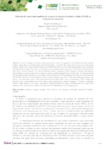Por favor, use este identificador para citar o enlazar este ítem:
http://www.alice.cnptia.embrapa.br/alice/handle/doc/1072021Registro completo de metadatos
| Campo DC | Valor | Lengua/Idioma |
|---|---|---|
| dc.contributor.author | PANTOJA, N. V. | pt_BR |
| dc.contributor.author | OLIVEIRA, M. V. N. d' | pt_BR |
| dc.contributor.author | HIGUCHI, N. | pt_BR |
| dc.date.accessioned | 2017-07-05T11:11:11Z | pt_BR |
| dc.date.available | 2017-07-05T11:11:11Z | pt_BR |
| dc.date.created | 2017-07-05 | pt_BR |
| dc.date.issued | 2017 | pt_BR |
| dc.identifier.citation | In: SIMPÓSIO BRASILEIRO DE SENSORIAMENTO REMOTO, 18., 2017, Santos. Anais... Santos: Inpe, 2017. | pt_BR |
| dc.identifier.isbn | 978-85-17-00088-1 | pt_BR |
| dc.identifier.uri | http://www.alice.cnptia.embrapa.br/alice/handle/doc/1072021 | pt_BR |
| dc.description | Structural changes on forest canopy produced by selective logging can be identified through satellite images, which shows the location and extent of these areas. The aim of this study was to analyze the detection of logging infrastructure using Landsat images and LiDAR data and verify how long logging scars can be identified through remote sensing. The study was carried out in an annual production unite at the Antimary State Forestry Acre State, western Amazon. We used Non-Photosynthetic Vegetation (NPV) images to identify log landings and compare its location with relative vegetation density models generated from LiDAR data. We also compared the log landing areas identified in the images with the location of 40 log landings obtained in the field through DGPS. The mean area of the detected by landsat images landings was 435 m2 while the undetected landings was 302 m2. The technique tested in this study allowed us to detect 30% of the log landings in NPV images and assisted in the visual interpretation of the canopy opened produced by selective logging. The relative vegetation density model tested in this study successfully identified altered by forest operations area two years after logging, while using Landsat images these areas could be detected only in the logging year. | pt_BR |
| dc.language.iso | por | pt_BR |
| dc.rights | openAccess | pt_BR |
| dc.subject | Geotécnica | pt_BR |
| dc.subject | Manejo florestal | pt_BR |
| dc.subject | Dossel florestal | pt_BR |
| dc.subject | Floresta Estadual do Antimary (AC) | pt_BR |
| dc.subject | Bujari (AC) | pt_BR |
| dc.subject | Sena Madureira (AC) | pt_BR |
| dc.subject | Acre | pt_BR |
| dc.subject | Amazônia Ocidental | pt_BR |
| dc.subject | Western Amazon | pt_BR |
| dc.subject | Imagem de satélite | pt_BR |
| dc.subject | Espacios vacíos en el dosel | pt_BR |
| dc.subject | Explotación forestal | pt_BR |
| dc.subject | Manejo forestal | pt_BR |
| dc.subject | Monitoreo ambiental | pt_BR |
| dc.subject | Satélites | pt_BR |
| dc.subject | Teledetección | pt_BR |
| dc.title | Detecção da exploração madeireira a partir de imagens Landsat e dados LiDAR no Sudoeste da Amazônia. | pt_BR |
| dc.type | Artigo em anais e proceedings | pt_BR |
| dc.date.updated | 2017-11-08T11:11:11Z | pt_BR |
| dc.subject.thesagro | Degradação ambiental | pt_BR |
| dc.subject.thesagro | Controle ambiental | pt_BR |
| dc.subject.thesagro | Sensoriamento remoto | pt_BR |
| dc.subject.thesagro | Extração da madeira | pt_BR |
| dc.subject.thesagro | Raio laser | pt_BR |
| dc.subject.nalthesaurus | Forest management | pt_BR |
| dc.subject.nalthesaurus | Logging | pt_BR |
| dc.subject.nalthesaurus | Environmental monitoring | pt_BR |
| dc.subject.nalthesaurus | Remote sensing | pt_BR |
| dc.subject.nalthesaurus | Satellites | pt_BR |
| dc.subject.nalthesaurus | Landsat | pt_BR |
| dc.subject.nalthesaurus | Lidar | pt_BR |
| dc.subject.nalthesaurus | Canopy gaps | pt_BR |
| dc.subject.nalthesaurus | Lásers | pt_BR |
| dc.format.extent2 | 8 p. | pt_BR |
| riaa.ainfo.id | 1072021 | pt_BR |
| riaa.ainfo.lastupdate | 2017-11-08 -02:00:00 | pt_BR |
| dc.contributor.institution | Nara Vidal Pantoja, Instituto Nacional de Pesquisas da Amazônia (Inpa); MARCUS VINICIO NEVES D OLIVEIRA, CPAF-Acre; Niro Higuchi, Instituto Nacional de Pesquisas da Amazônia (Inpa). | pt_BR |
| Aparece en las colecciones: | Artigo em anais de congresso (CPAF-AC)  | |
Ficheros en este ítem:
| Fichero | Descripción | Tamaño | Formato | |
|---|---|---|---|---|
| 26341.pdf | 968,42 kB | Adobe PDF |  Visualizar/Abrir |









